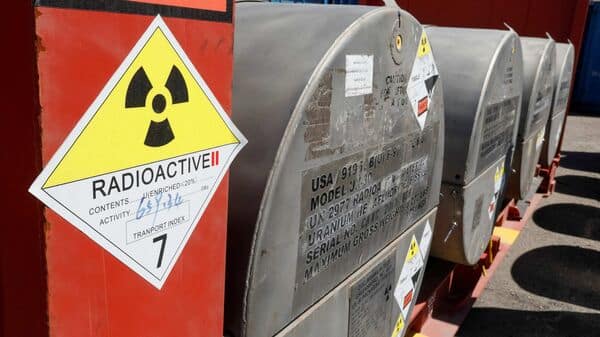Eastern Libyan forces said on Thursday that 10 drums of uranium declared missing by the UN nuclear watchdog had been found near the warehouse they were taken from in southern Libya.
The International Atomic Energy Agency (IAEA) said on Wednesday its inspectors found out about the missing uranium after carrying out an inspection originally planned for last year that “had to be postponed because of the security situation in the region”.
Here is everything you need to know about uranium and its usage as a nuclear fuel.
What is uranium and where can it be found?
Uranium is a heavy metal which occurs naturally in low concentrations in soil, rock and water. It is commercially extracted from uranium-bearing minerals.
About two-thirds of the world’s production of uranium from mines is from Kazakhstan, Canada and Australia, according to 2022 data from the World Nuclear Association.
What is uranium used for?
The radioactive metal is the most widely used fuel for nuclear energy due to its abundance and the relative ease of splitting its atoms. It is also used in treating cancer, for naval propulsion, and in nuclear weapons.
U-238 is the most common isotope of uranium found in nature but it cannot produce a fission chain reaction – the process of splitting a uranium atom to release energy.
The U-235 isotope, however, can be concentrated through a process called enrichment to produce energy by fission, making it suitable for use in nuclear reactors and weapons.
How much uranium is needed for a nuclear weapon
The amount of uranium that went missing contains enough of the U-235 isotope to build a first-generation nuclear bomb if enriched to over 90%, according to Dr. Edwin Lyman from the Union of Concerned Scientists.
“It’s not a direct or immediate proliferation threat, but the loss of the large amount of natural uranium is a concern because of its potential for conversion to nuclear weapons use material.”
Should this incident be a cause for concern?
Dr Lyman says the incident raises questions about the capability of the IAEA to maintain its continuity of knowledge over nuclear materials in countries which are active conflict zones.
Libya has had little peace since a 2011 NATO-backed uprising ousted Muammar Gaddafi. Since 2014, political control has been split between rival eastern and western factions, with the last major bout of conflict ending in 2020.
Raising concerns about the remote location of the uranium ore and the vast infrastructure needed to enrich it, Scott Roecker, Vice President of Nuclear Materials Security at Nuclear Threat Initiative, said the worst case would be “that a country has a clandestine nuclear weapons program and is using that material for such a program.”
Download The Mint News App to get Daily Market Updates & Live Business News.
(Except for the headline, this story has not been edited by PostX News and is published from a syndicated feed.)

